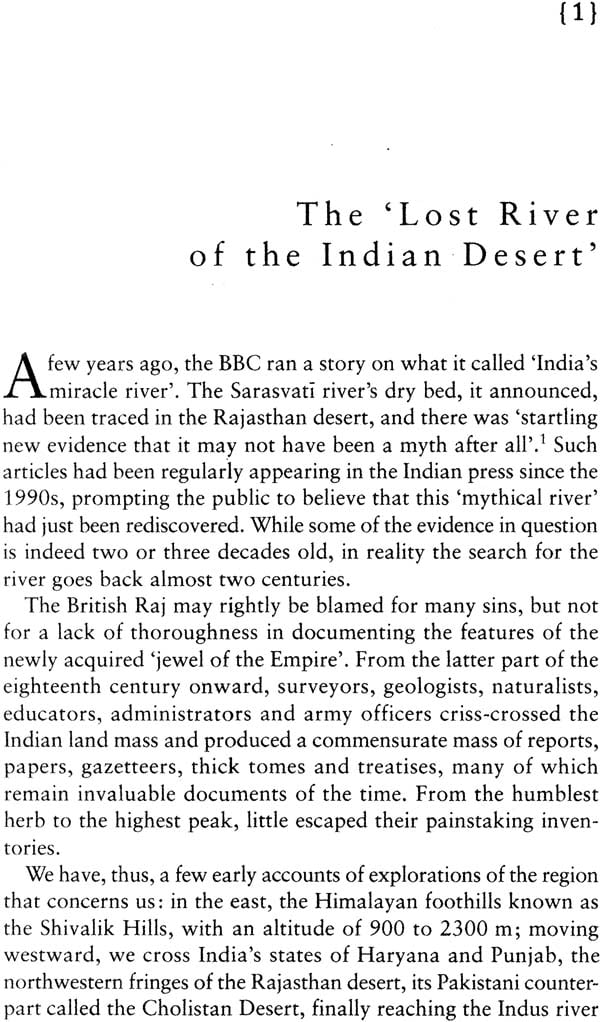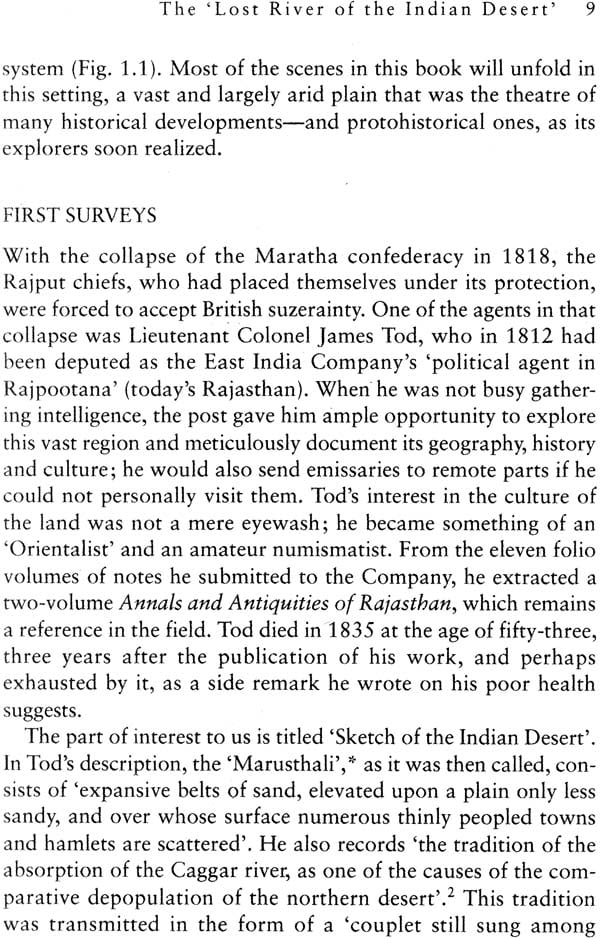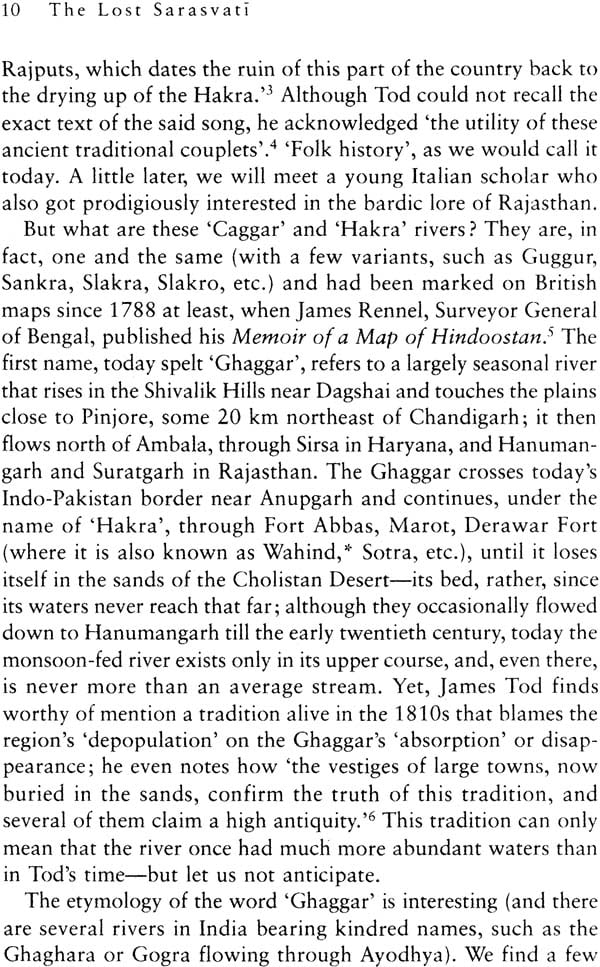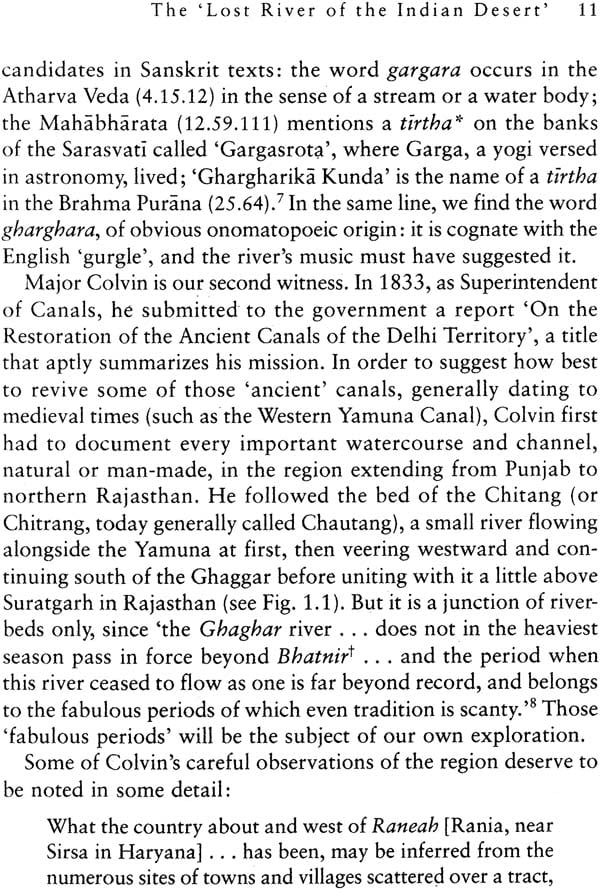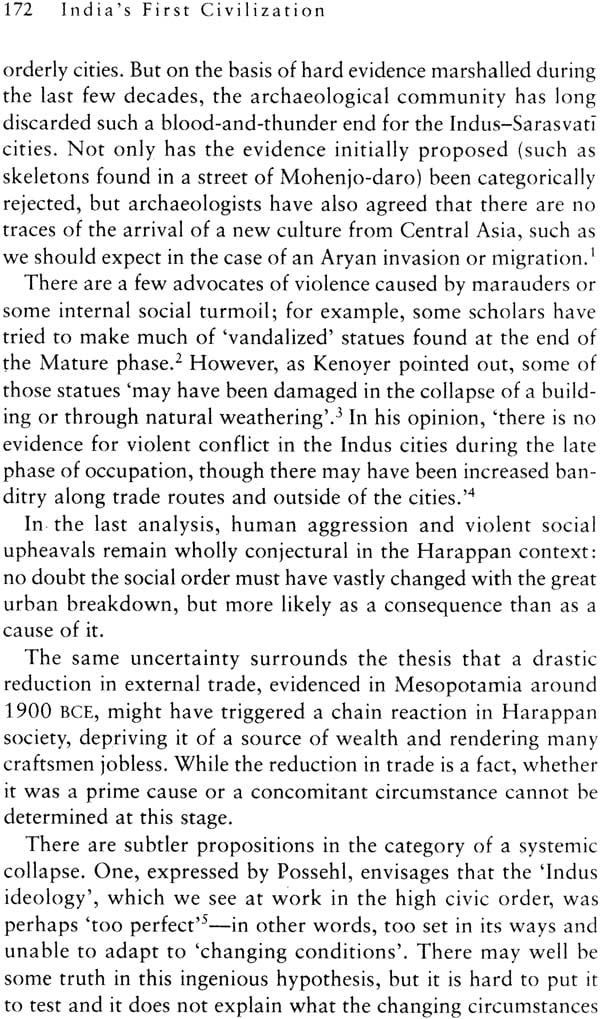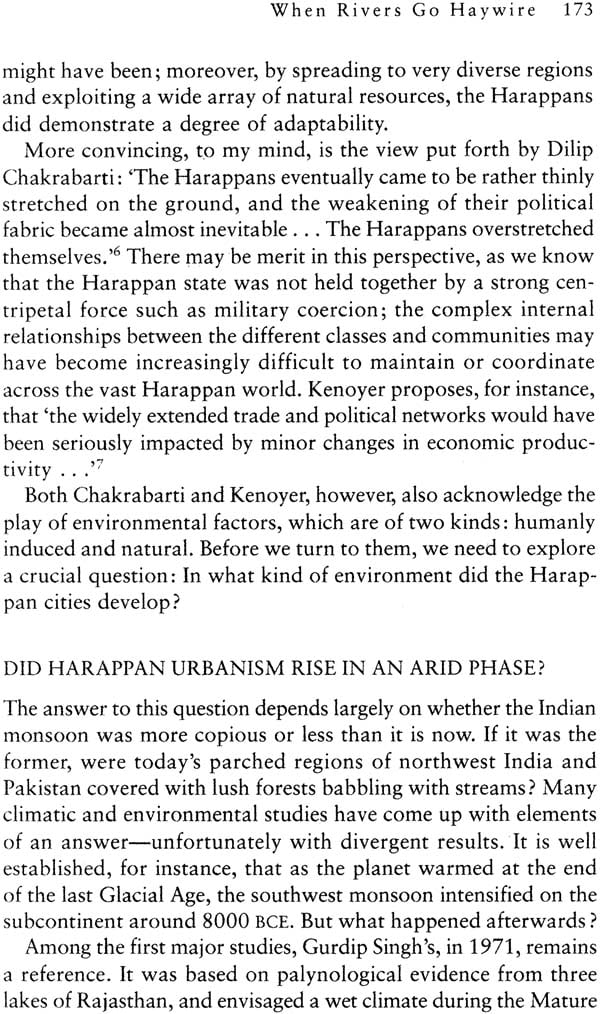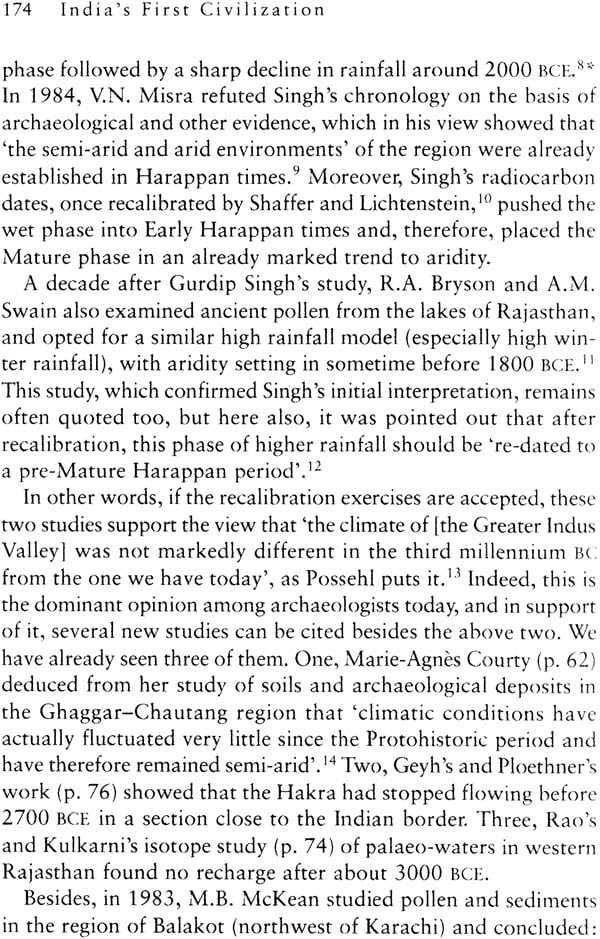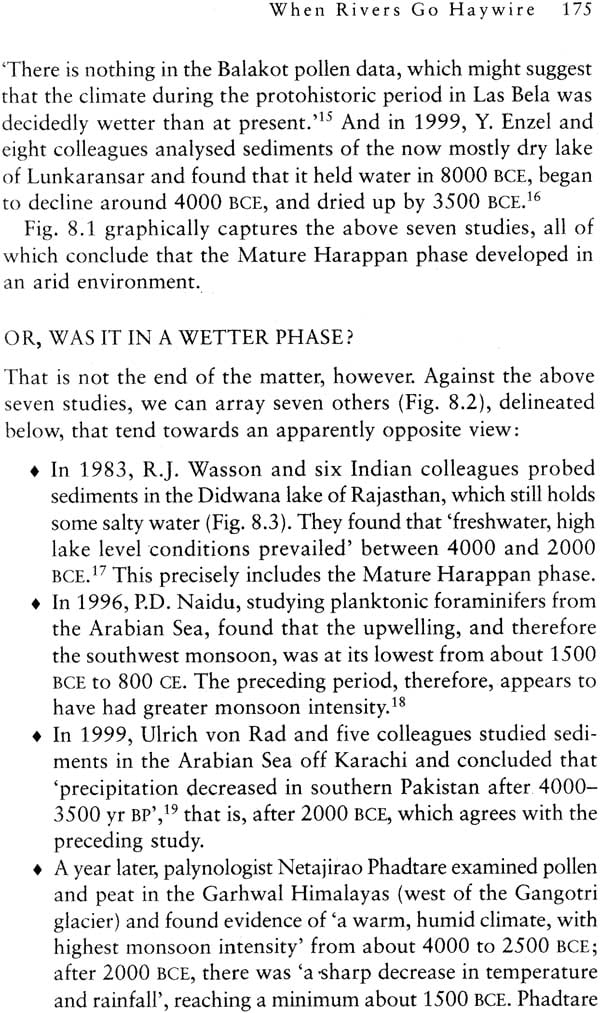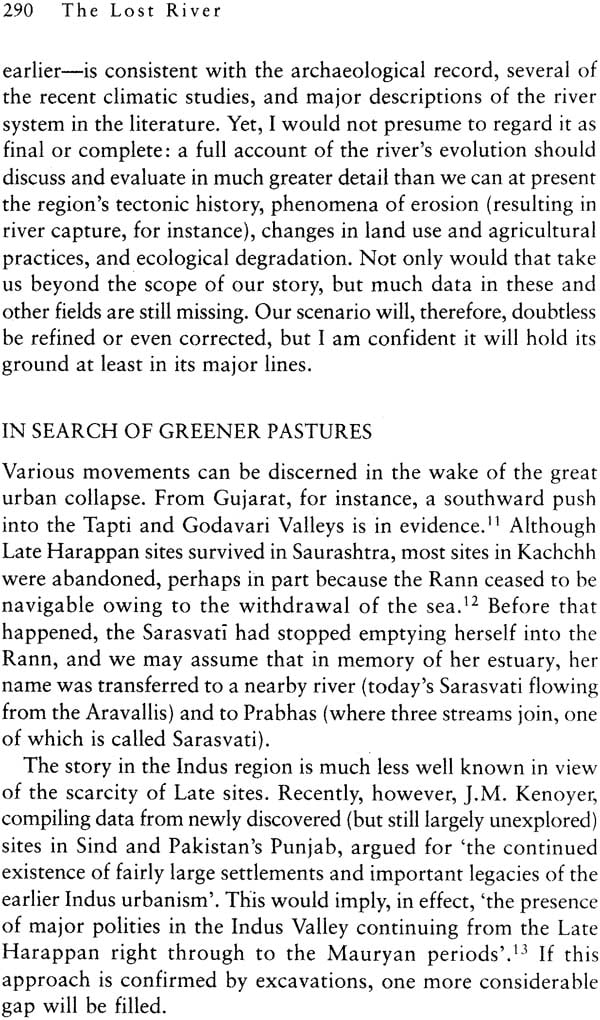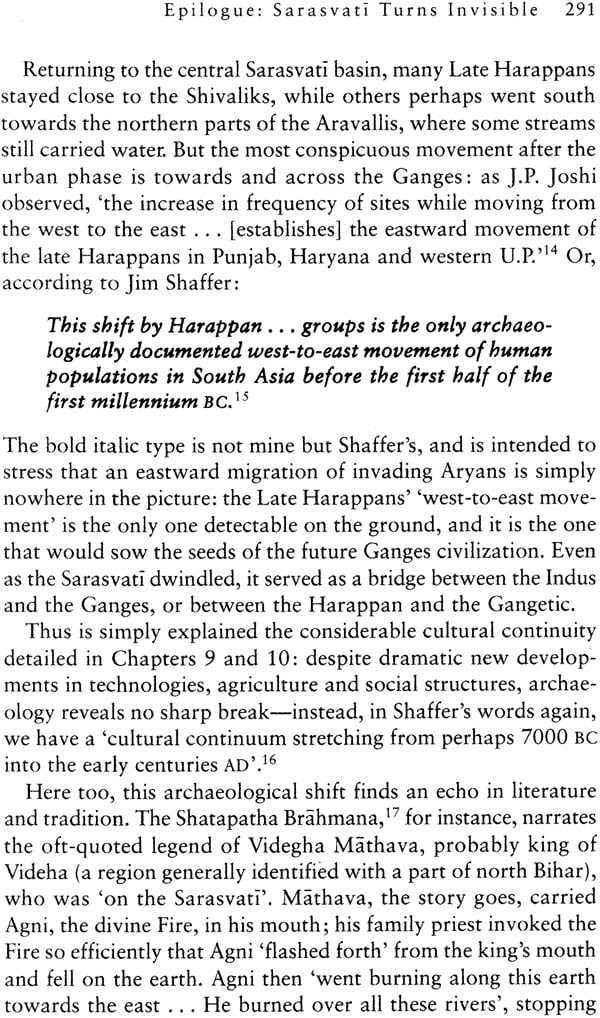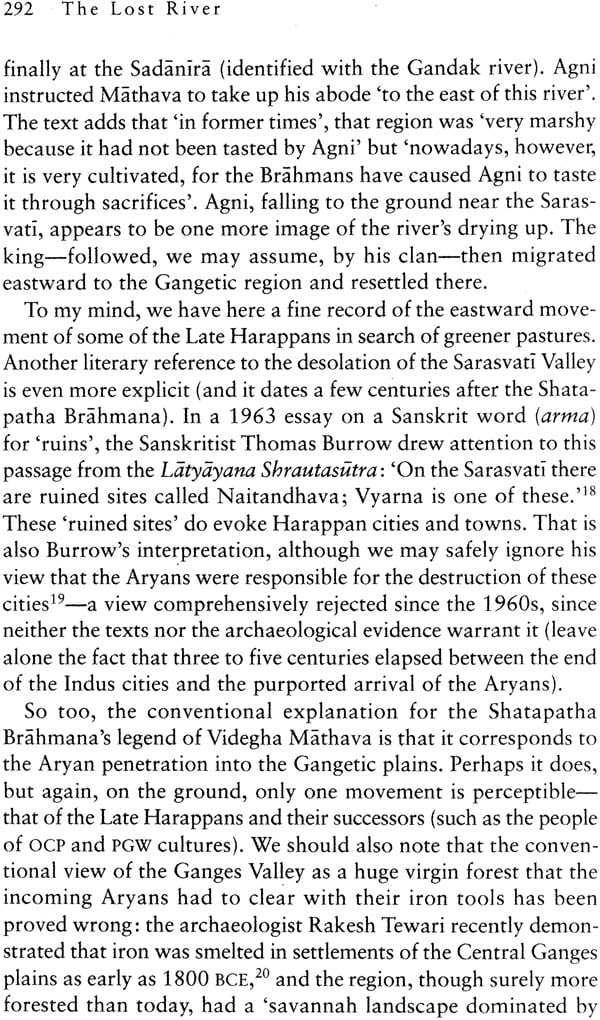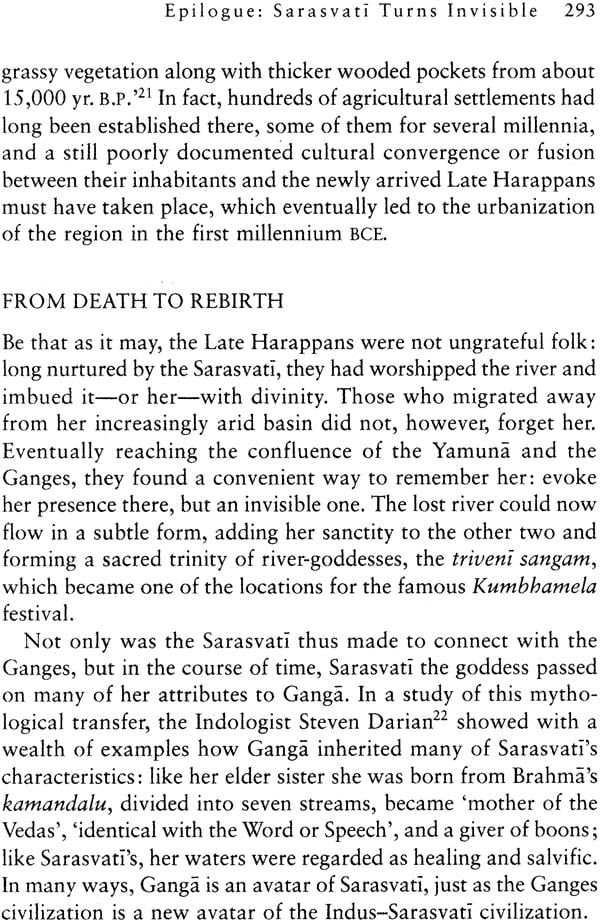
The Lost River: On the Trail of the Sarasvati (Saraswati)
Book Specification
| Item Code: | IHG074 |
| Author: | Michel Danino |
| Publisher: | Penguin |
| Edition: | 2010 |
| ISBN: | 9780143068648 |
| Pages: | 358 (Illustrated Throughout In B/W with Map) |
| Cover: | Paperback |
| Other Details | 8.5 inch X 5.5 inch |
| Weight | 430 gm |
Book Description
From the Jacket
The Indian subcontinent was the scene of dramatic upheavals a few thousand years ago. The Northwest region entered an arid phase, and erosion coupled with tectonic events played havoc with river courses. One of them disappeared. Celebrated as ‘Sarasvati in the Rig Veda and the Mahabharata, this river was rediscovered in the early nineteenth century through topographic explorations by British officials. Recently, geological and climatological studies have probed its evolution and disappearance, while satellite imagery has traced the river’s buried courses and isotope analyses have dated ancient waters still stored under the Thar Desert.
In the same Northwest, the subcontinent’s first urban society-the Indus civilization-flourished and declined. But it was not watered by the Indus alone: since Aurel Stein’s expedition in the 1940s, hundreds of Harappan sites have been identified in the now dry Sarasvati’s basin. The rich Harappan legacy in technologies, arts and culture sowed the seeds of Indian civilization as we know it now.
Drawing from recent research in a wide range of disciplines, this book discusses differing viewpoints and proposes a harmonious synthesis-a fascinating tale of exploration that brings to life the vital role the lost river of the Indian desert’ played before its waters gurgled to a stop.
Born in France in 1956, Michel Danino has lived In India since the ago of twenty-one, studying Indian civilization and culture. He has authored books in French and English, lectured widely and contributed studies to aspects of Indian archaeology.
In the 1980s and 1990s, Michel Danino worked for the protection of a Shola forest in the Nilgiris, and this has led to the creation of Tamil Nadu’s first joint forest management group.
Preface
The Lost River: On the Trail of the Sarasvati attempts to popularize, in the best sense of the term, the present state of research into the legendary river. Understandably, the Sarasvati has often burst its scholarly banks to spill out into the public arena. To tell my tale, I have used a lay person’s language as far as possible, but I have rested my case on the most authentic findings from a variety of disciplines.
Detailed references for all quotations-which, let me stress, do not necessarily present the whole viewpoint of the quoted author -are found at the end of the book. (The are referred to in the text by Arabic numerals, while footnotes are referred to by asterisks.) My interpolations are within square brackets, which means that any parentheses are those of the quoted author. Except when indicated, the English translations of French texts are mine.
As the lay reader may find diacritical marks for Sanskrit words bothersome, I have only indicated long vowels, except for current geographical names: thus ‘Yamuna’ is today’s river, ‘Yamuna’ is the one in Harappan or Vedic times (in quotations, the author’s usage has been left unchanged). Indian place names, once rendered into English, are often spelt with disconcerting variety; I have chosen the most common spellings, preferably official ones, mentioning alternatives when possible. For dates before the Common Era, I have used the now standard abbreviation BCE instead of BC, and CE instead of AD. Maps are important in this book; in those drawn by me, international boundaries, when they appear, are as close as possible to those found on maps approved by the Government of India, yet should be regarded as only approximate, not authentic.
While writing this book, I often felt that the Sarasvati’s story has the potential to captivate non-Indian readers too; I hope the brief explanations I have inserted to enable them to follow details of India’s geography and history will be excused by those familiar with them.
The motif at the end of each chapter, a bunch of three papal leaves, is found on Harappan pottery.
I wish to thank the Archaeological Survey of India for its gracious permission to reproduce many photographs in this book. I am grateful to a few distinguished archaeologists, including Prof. B.B. Lal, the late Dr S.P. Gupta, Dr V.N. Misra, Dr R.S. Bisht, Prof. K.V. Raman and Dr. R. Nagaswamy, who, over the course of a decade, generously shared their vast experience and patiently answered my nagging questions on various aspects of India’s protohistory. Many Indian, American and French friends helped me gather the materials for this book or drew my attention to new findings; some of them are acknowledged in the Notes at the end of the book, but I cannot fail to mention here Dr S. P. Gupta, Dr K.N. Dikshit, Prof. R.N. Iyengar, Dr Kalyanaraman, Vishal Agarwal and V. Karthik.
I am greatly indebted to Ravi Singh, chief editor of Penguin India, for his warm interest in the story of the Sarasvati; my thanks, too, to R. Sivapriya for her guidance and to Debasri written without the support of my parents, my companion Nicole, and a few close friends whom I need not name; they know my debt to them. Finally, I owe a special debt of gratitude to Dr Nanditha Krishna for her precious advice on the conception and plan of the book, and for her constant encouragement.
Prologue
India loves myths; they people every literature and every oral tradition of the land. By ‘myth’, I mean a complex, multi-layered legend that weaves together heroic deeds and divine miracles, and, through powerful symbols, imprints a set of values on the mind of a people. The myth becomes, in turn, inseparable from its people’s customs and traditions. Certain tribes of India’s Northeast enact till today scenes from the Mahabharata or the Ramayana, the two great Indian epics, even if it means substituting bamboo huts for glittering palaces. The message is what maters, not the décor.
And whether or not a myth has some historical basis, it is ‘true’ as long as it lives-and works-in the minds it has shaped. The great flood, the churning of the ocean, the descent of Ganga, the construction of a bridge to Lanka by an army of monkeys, or Krishna’s lifting of the Govardhan hill are, in that sense, true. Whether they are ‘facts’ in our limited sense of the term is irrel-evant: myths are something greater than facts. As long as we live life like a burden on our shoulders, Gilgamesh will pursue his quest for immortality, and Sisyphus will keep pushing his boulder uphill only to see it roll down again. Myths of creation, of origin or identity, myths of conquest and heroic defiance, all fulfil precise social, cultural and spiritual functions. Whether or not a myth has grown around a historical seed, it is a maker of history.
Our modern mind cannot easily grasp the role and impact of myths in ancient or traditional societies, whether Greek, Polynesian or Indian: today’s societies are ‘mythless’ ones; for better or worse, we have depopulated our inner worlds. In a bizarre reversal of meaning, the very word ‘myth’, which originally meant ‘word’ or ‘speech’ in Greek (much like the Sanskrit vach), has come to evoke a web of lies, a concocted fable or a collective delusion.
Our story starts with a ‘mythical’ river that makes its appearance in the Rig Veda, the most ancient Indian text-‘her’ appearance, rather, since the Sarasvati was also a goddess, a mother, and soon came to embody sacred speech, the Word. Multi-layered, as I said. Later texts, including the Mahabharata, described the Sarasvati as a ‘disappearing’ river, until she became ‘invisible’, meeting Ganga and Yamuna at their confluence; by then, she was the goddess, as we knew her today.
As it happens, this myth is rooted I more than a vague historicity: we will discover how the Rig Veda’s ‘mighty river’ has been identified by most experts with the now dry bed of a river that once flowed through northwest India, in a course roughly parallel to the Indus, a little to the south of it. The story of the quest for the ‘lost river’ has never been told in full, and there is a frequent misconception that the Sarasvati’s rediscovery is a recent one to be credited to satellite photography. Rather, we will see how, in the early nineteenth century, British geologists, civil and military officials started surveying the region, which today includes parts of the Indian states of Haryana, Punjab and Rajasthan and the Cholistan Desert of Pakistan; the river’s bed apart, they found its banks strewn with countless ruined settlements, mute evidence that this desolate landscape had once known better times. Indeed, by the 1850s, Indologists were in no doubt about the location of the ‘mythic river’. Decades later, hundreds of those sites were found to have belonged to the Harappan or Indus civilization, which we will visit at some length. We will discover, in particular, considerable evidence that much of its culture survived the collapse of its cities, some of which is still surprisingly alive today.
At this point, we might expect a relatively simple story-as simple as, say, the rediscovery of Troy by Schliemann and its correlation with Homer’s Iliad-since the ancient literature also refers to numerous sites along the Sarasvati. But the river got embroiled in a thorny issue, that of the Aryan invasion or migration theory, leading a few scholars to locate the Vedic Sarasvati elsewhere, or deny its physical existence altogether. We will hear diverse viewpoints, learn from every one of them, and I will present my own, while weighing and trying to reconcile inputs from a variety of disciplines, including geology, climatology and archaeology. In the Indian context, a synthesis of archaeological and literary evidence has generally proved so elusive that archaeologists have often given up the attempt as a bad job, while scholars of literature rarely try to integrate archaeological data into the picture they construct from the texts. I hope to show that in the case of the Sarasvati, we find a surprising number of echoes reverberating between the two disciplines, and can venture to exploit the correlations beyond what has been done so far.
Whatever perspective my readers will choose to adopt in the end, I will be rewarded if they feel enriched by insights on the dawn and early development of the Indian civilization-a civilization watered not only by the Indus and its tributaries, but also, in the view of most archaeologists, by a second river system that has since vanished.
Let us set off on our journey, attentive to every clue on the trail of the lost river.
| Preface | ix | |
| Prologue | 1 | |
| PART 1: THE LOST SARASVATI | ||
| 1 | The Lost River of The Indian Desert | 7 |
| 2 | The Mighty Sarasvati | 35 |
| 3 | New Light on an Ancient River | 57 |
| PART 2: INDIA’S FIRST CIVILIZATION | ||
| 4 | A Great Leap Backward | 83 |
| 5 | The Indus Cities | 100 |
| 6 | From The Indus to The Sarasvati | 133 |
| 7 | New Horizons | 155 |
| 8 | When Rivers go Haywire | 171 |
| PART 3: FROM SARASVATI TO GANGA | ||
| 9 | The Tangible Heritage | 191 |
| 10 | The Intangible Heritage | 225 |
| 11 | The Sarasvati’s Testimony | 252 |
| Epilogue: Sarasvati Turns Invisible | 283 | |
| Notes | 295 | |
| Suggested Further Reading | 333 | |
| Copyright Acknowledgements | 340 | |
| Index | 341 |
